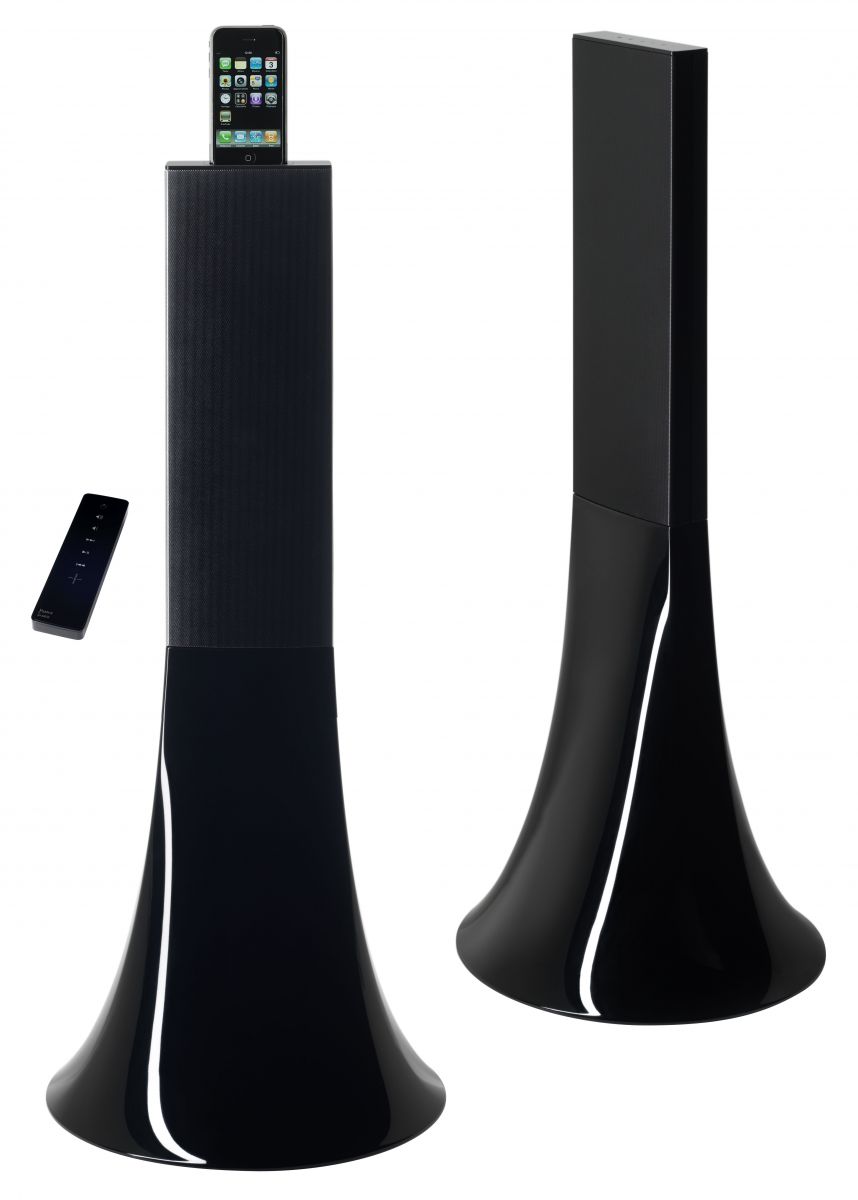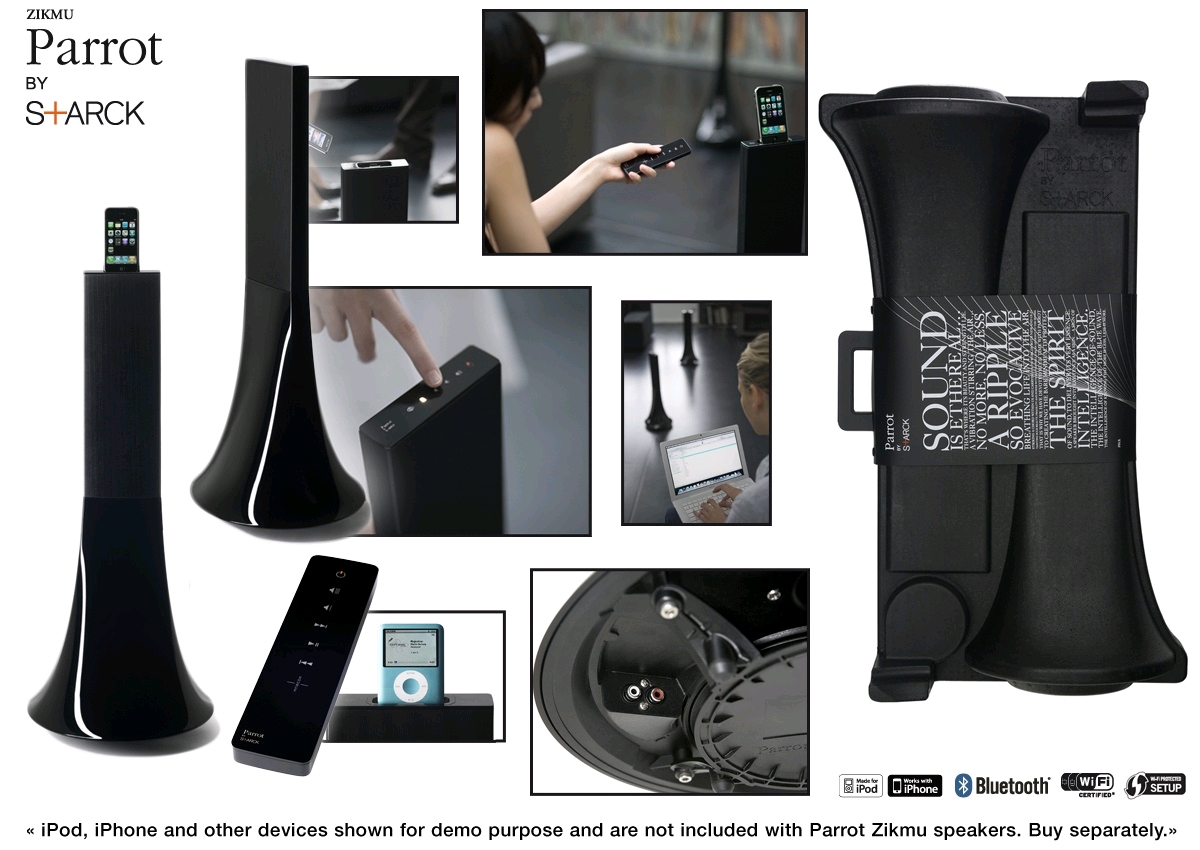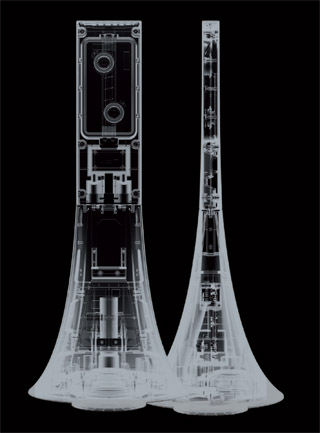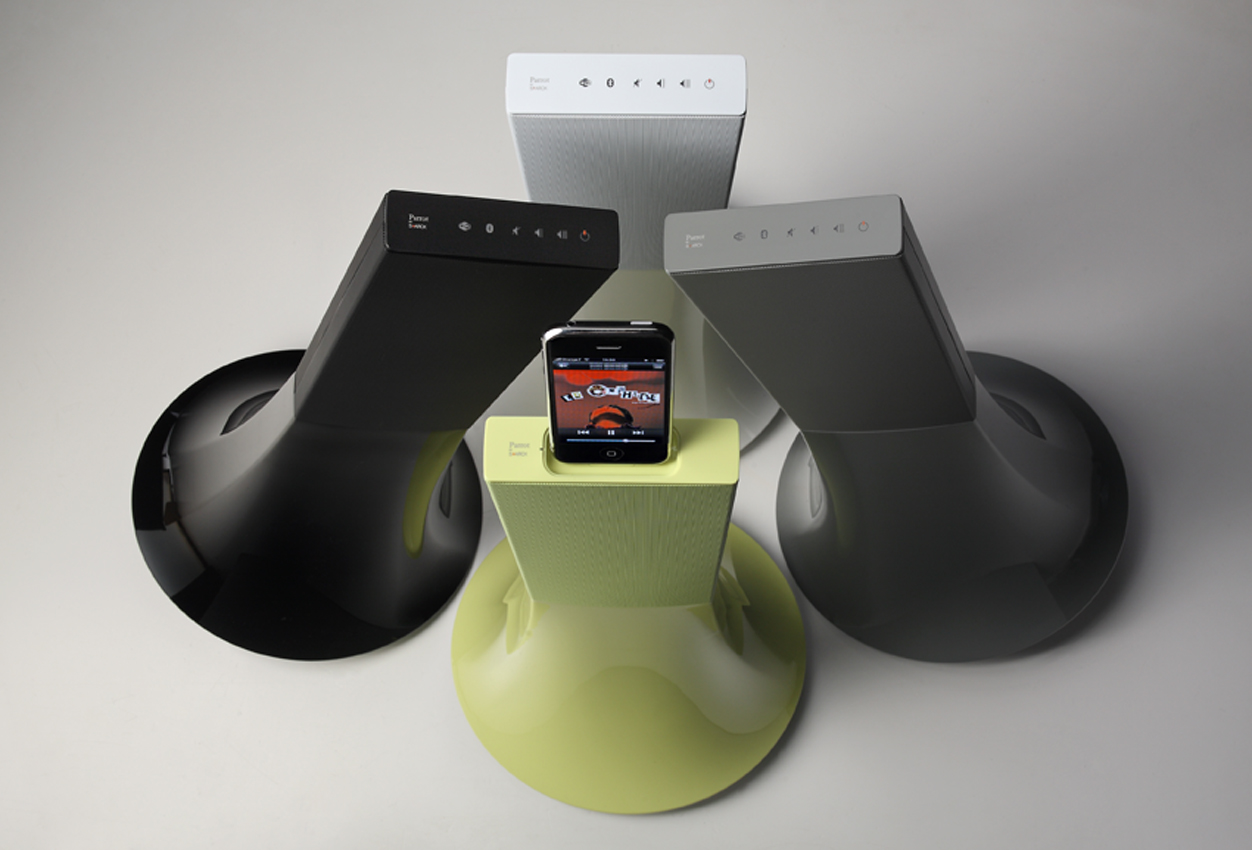Parrot Zikmu BT/WiFi Loudspeakers
Product Details
Manufacturer: Parrot
Website: link
Typical Selling price: £999.00/pair
In A Nutshell
Competing with Meridian HiFi for cool coverage, who’s products are beloved of a Hollywood money angel and keep appearing in films, these loudspeakers from Parrot are designed by no less than Philippe Starck and are called Zikmu. They are exquisitely cool in every part and have featured in the pop videos Bad Romance by Lady Gaga, Russian Roulette by Rhianna and Sexy Chick by David Guetta. They are as iconic in looks as the Alessi kettle and his legendary juice-squeezer, as seen ripped off in MIB II as a tiny space ship! Seriously, though, these are a hybrid NXT/Moving Coil technology blend with top end DSP and industry-leading wireless connectivity to add up to a very strange and fulfilling listening experience. And utterly beautiful to look at, handle and use.
Overall 9.0
Sound Quality 8
Build Quality 9
Wireless Performance 10
Features 10
Value For Money 8
A Talk Audio Recommended product:
What It Is
A pair of loudspeakers arriving packed in an expanded Polyurethane foam clamshell carton, held with a strap-wrap with graphics. You unpack and install by fitting the beautifully-made woven-covered mains leads and that is it. You can also connect an analogue signal via a pair of RCAs if you wish. A remote control to match the speakers’ design and colour is included. One speaker has an Apple dock (pre ‘˜Lightning Connector’ gen products i.e. NOT iP5) on the top surface and the other has the touch-membrane switch control surface we see under Lady Gaga’s finger tip at the very start of the Bad Romance video. But what you are really supposed to do is to pair the speakers with your Bluetooth device, especially Apple ones.
I tested the Zikmu with iPhone, iPod Touch and even tried a RIM product, my BlackBerry 9300. I gather that no-one had EVER dared to spank them as hard as I did under the Talk Audio test!
Editor Review : Parrot Zikmu Loudspeakers by Philippe Starck
How Are They Made?
These are very Phil Starck. Clever use of materials and available technology to be brilliant predecessors of the awesome Zik headphones’ cunning modus operandi and just lovely to look at. A sort of futuristic obelisk of sound, they look quite unlike any speaker you ever saw or heard before. For one, each has three active amplifiers, all running off a DSP controller inside, one per driver. One driver is a smallish (six inch-ish) bass unit with a Neo magnet, firing at the floor and using every acoustic advantage. First, it is in a tapered enclosure as it is down-firing, which helps avoid a back-wave pressure smearing the bass. Second, it has a long port, like an awful internal parasite inside that serves to crank at least three more decibels out of output by also firing downwards, alongside the woofers’ face. Finally, both port and driver are held just a wee way off the floor to provide some more acoustic ‘˜loading’ to pressurise and squeeze the output even harder.
Above this in the impossibly skinny looking section is a brace of honeycomb panels with NXT exciters fixed to their behinds that look like wee Hockey pucks. These are magnets that move on a fixed coil, rather than a diaphragm being fixed on the coil directly. The pucks buzz and shake the panel to make music. That is a mad over-simplification but true in essence as it took a lot of skull sweat from NXT and I have followed their progress down the years. It is all about shear stresses and the panels themselves.
This technology works VERY differently to cone speakers, or even electrostatic panels, which we have seen in cars, in that instead of waves like a pebble in a pond, it excites a surface, like water in a washing up bowl in the sink when the washing machine is on the spin cycle. This means the sound emanates from the source in a deeply different way and far more evenly. Thus the original concept was all about musical ceiling tiles in shops that you could use less of than coil speakers to blare tunes at Top Shop shoppers. Since then, we have seen cardboard self assembly NXT cheapo fun speakers but none for car use.
This is odd, as at one point the NXT folks predicted the demise of the cone speaker in cars, stating that their technology would take over. There was even a demo car who’s ‘˜whole interior’ could be the speaker. It didn’t take over but it did engender an entirely new approach, as mad as Neodymium made speaker design change, so Zikmu are truly different.
The remote is well made and feels solid and the wires and case are all, just well, posh and somehow feel ‘˜tech’ and deeply desirable.
How Well Does It Work?
Even Parrot, the Gods Of Bluetooth, have limits and while the Parrot Asteroid (first generation) head unit in my dash will grasp my BlackBerry by its Bluetooth balls and make calls and rapidly (and I mean fragment of a second) pull the few tunes I have in there out, to play them in the car, the slightly different software array in the Zikmu speakers wasn’t keen on my BB 9300. That said, the speakers are continually updateable as new Bluetooth devices and issues are created and raised and indeed, the first time we tried my iTouch 4th Gen, I found I needed a wee update myself. Did so and I was rocking.
I confess I didn’t ‘˜get’ the nature of these at first and the cool executive dude from Parrot (who seems to ooze the happy confidence of a bloke working for a bloody HUGE outfit that has cool stuff, too) was gently amused. For I very testily got up and rearranged the speakers he had just slapped into place for me, so as to better arrange them for ‘˜toe in’. Which, being a ‘˜distributed mode’ loudspeaker in the mids and tops and bass being omni-directional, meant that they really make fabulous stereo from wherever you plop them. The website goes into detail about how this 360 degree sound works, here: parrot
At least, to my credit, I worked this out on my own in moments and heartily apologised and took the pip out of myself for being a ‘˜HiFi Pompuese!’ I was wrong. But the speakers were so right. Of course, you are still limited by the laws of physics and these are smallish and not monster powered compared to the car systems we talk about but they filled my room and I could feel the low end.
Now that I ‘˜got’ it, I tried a walk about in the room and also placed them pointing different ways and as long as they were a decent distance apart, they didn’t care. They just played sweetly and richly and sounded good from everywhere. I detected a tiny lack in the utter top end frequencies, as they do not have a bat-frequency tweeter and that mids-to-tops honeycomb still has way more mass than a tiny HF diaphragm, but that is to split hairs.
As a hip and cool lifestyle product, these are a joy to deal with, own and have around as décor. I did turn them up and while you may not be about to engender the kind of pool party we see in David Guetta’s Sexy Chick pop video with their sheer power, you will find them satisfying and even exciting. Never having to get off your butt again to change the tune also has its own appeal, of course.
Full Specifications
– Total power output: 100W RMS, 50W per channel
– 3-channel (Class D) digital amplifier
– Frequency range: 50 Hz 20 kHz
– Compatible audio formats: MP3, LPCM
– Settings: volume, R/L balance, equalizer with presets
– RF remote control
– RCA line-in input for all audio analogue sources
– Cabinet custom moulded design using ABS and PMMA resins with acoustically transparent cloth grilles over the membrane sections.
– Power supply: 70W (per speaker)
– WiFi b/g with SES/WPS
– Bluetooth v2.1 + EDR
– Profiles supported: A2DP (Advanced Audio Distribution Profile), AVRCP (Audio/Video Remote Control profile)
– Maximum range: 50 feet, 15 metres
– Pairing: by PIN code (0000)
– Updates via Bluetooth
– Dimensions:
Height; 29.2in., (750mm)
Base; 12.5 x 11.3in., (320 x 290mm)
Top: 5 x 1.4 in., (130 x 35mm)
Weight: 17lbs., 3.5Kg each
– Colours: Sorbet Lime, Arctic White, Pearl Grey, Classic Black, Dragon Red
– Remote control: ZIKMU Parrot by Starck include a remote control that match the speakers colour.
– Bluetooth Compatibility: iPhone„¢, smartphone, MP3 players, PC including Bluetooth 2.0
– RCA line-in: RCA line-in input for all analogue audio sources.
– Streaming Audio: Streaming your tracks from your Mac via Bluetooth. Audio streaming via WiFi using MAC and PCs.
– Compatible: iPhone iPod® Touch, iPod®: The iPhone/iPod dock brings a fully digital connectivity without any audio loss thanks to Apple microprocessor for authentification.
And here, finally, for your further delectation, is the Parrot Zikmu promo video
http://www.youtube.com/watch?v=-RegBqdyPrI
Lastly, the next Parrot speaker product has just been released in the USA and adds the NFC or Near Field Connectivity used by Barclaycard and London’s Oyster Card system… as used by Sony in their phones, to the BT and WiFi. It is called Solo and is sold one at a time to plop ‘˜em about your mansion where you wish

